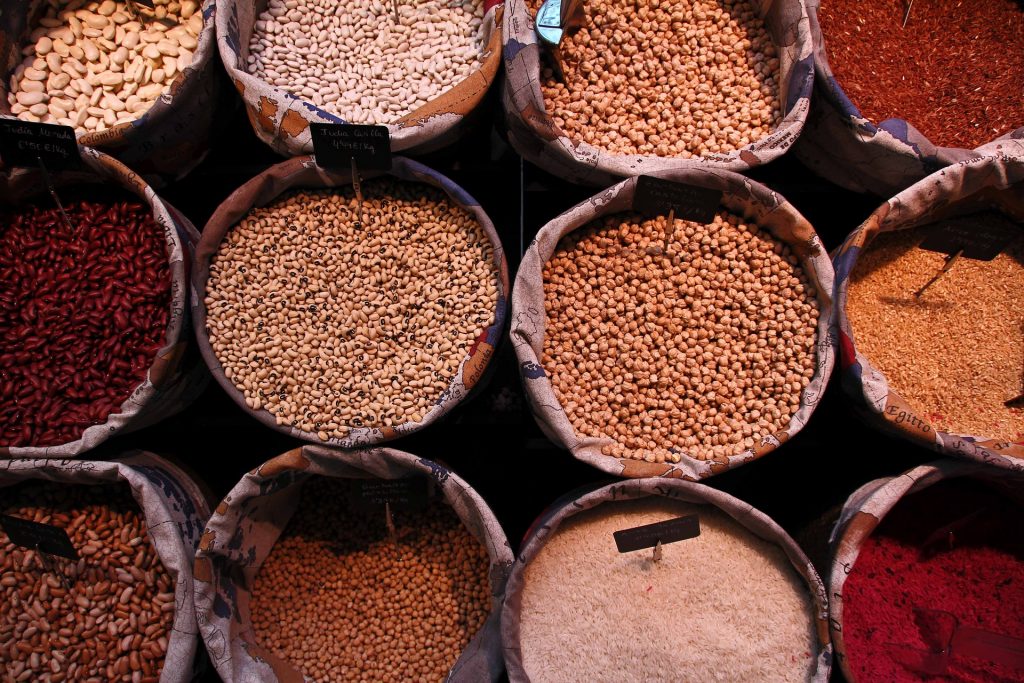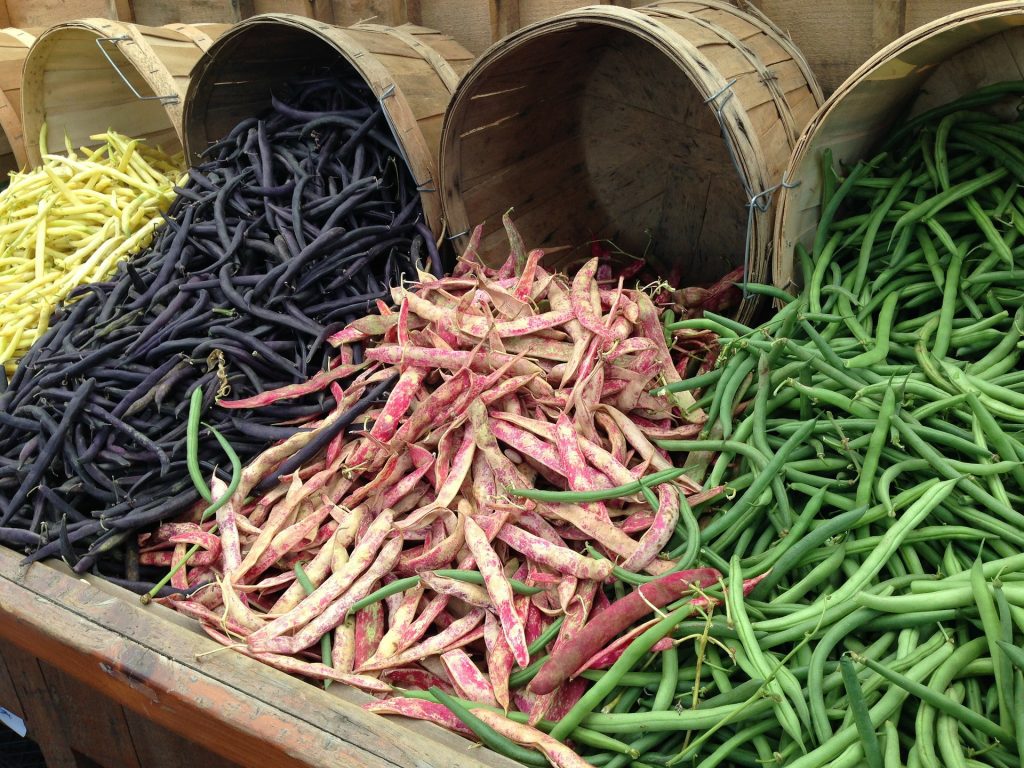
The consumption of legumes by the Human Being is immemorial and historians point it to the Neolithic period. There are references that, for example, the Aztec, Inca and Mayan peoples already consumed beans, whereas the soybean was used by the Asians for many centuries and the lentils were part of the food of the people of the Mediterranean.
Legumes are divided into two groups: grains (beans, chickpeas, lentils, peas, fava or lupine …) and oilseeds (soybeans, peanuts…).
Beans, chickpeas, peas, soybeans, lupines or lentils are grown every year and are the grains or seeds that are inside the pods, in green or after drying, which are normally used in the food of man and animals, besides being transformed to extract oils.
Rich in proteins, carbohydrates, fibers and minerals, legumes should be part of our daily menu, although it is imperative to complement it with other food, such as whole grains, to give the body all the essential amino acids. At stake is the lowest biological value of the vegetable protein contained in legumes, as compared to that of meat, fish or eggs.
“They [legumes] are a fantastic source of vegetable protein, low in fat, cholesterol-free, gluten-rich and rich in minerals and vitamins,” says Raúl Benítez, regional representative of FAO. United Nations (UN).
In 2016, the UN declared the ‘International Year of Legumes’. A flag justified “in order to raise awareness about the potential importance of the role of this food in promoting health, nutrition, food security, and environmental sustainability,” said UN officials in a statement.
The legumes can be bought easily and their price is usually accessible to the pocket of any consumer. Thanks to the nutritional values of legumes, we should consume them at least two to three times a week. Your body thanks you as it prevents cardiovascular stress, type 2 diabetes, intestinal inflammation or even colon cancer, among others.
The planet thanks
Growing legumes makes agriculture more productive, especially in regions where food insecurity persists, as they absorb the nitrogen they need directly from the air and, in turn, fix the nitrogen in the soil and make it available for future crops. In practice, legumes reduce the use of fertilizers, require less water than other crops, and leave a low carbon footprint in the environment. To give you an idea, the production of one kilo of beef or chicken requires spending 18 and 11 times more water, respectively, than in the cultivation of one kilo of legumes. In terms of the emission of carbon dioxide (Co2), there are studies that indicate that one kilo of leguminous plants generate only half a kilo of Co2, while one kilo of meat produces 9.5 kilos of Co2.
How to buy and store
The various varieties of beans, chickpeas, lentils, peas, beans, peanuts, lupines, among other legumes can be bought in grain, powder or pre-cooked cans. The most recommended option is organic production, that is without genetic modifications. These previously cooked and canned legumes contain preservatives and have already lost many of their nutrients.
Whole grains should be stored in tightly closed containers in cool, dry places. But be aware that this storage is not recommended for periods longer than six months as they can harden and become difficult to cook.
How to cook
In dry legumes, the first step is to select the grains and make the first selection, as it may contain small pebbles, they must be soaked in order to become more digestible and prevent changes in bowel functioning. The soaking should take place for at least six to eight hours. The most practical is to soak overnight, in water at room temperature, adding water several times, if necessary, and then using it when cooking, because all this water contains the energy of the legume that our body is grateful.
The cooking time, for most grains, is about 40 minutes to 2 hours (depending on the legume). Lentils can be cooked in less than 30 minutes.
Dried lupines, easily purchased from more traditional grocery stores, should be soaked overnight and then boiled in new water for 20 minutes. After cooling, it is placed in a bowl with water that must be changed up to three times a day for five days. When they are not bitter, they can be preserved for a long time in seasoned water with salt and/or oregano and laurel.
The ideal is to cook the legume and then eat it, but it is possible to freeze the surplus in small doses to be used at each meal, although it is advisable to consume them in a short time.

This text is an awareness. According to the season of the year and the moment in which you are, it is up to each one to feel if they should consume this food. The dosage and frequency depend on the nature and physical condition of each Human Being.




